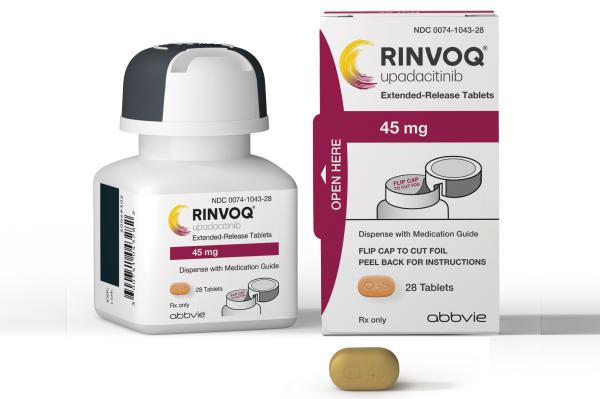Understanding Rinvoq cost is essential for those starting on this medication. Rinvoq is a prescription medication used to treat conditions like rheumatoid arthritis, eczema, and ulcerative colitis. For many new users, one of the biggest concerns is price. The retail cost can be shocking, but most people don’t pay full price thanks to insurance, savings programs, or patient support.
Still, understanding Rinvoq’s cost is not always easy. There are copays, discounts, coverage rules, and specialty pharmacies involved. That’s why this guide breaks it down in simple terms—so you know what to expect and what steps can lower your out-of-pocket costs.

What Is the Full Price of Rinvoq?
The list price of Rinvoq is typically around $6,000 per month without insurance. This price includes one 30-day supply of the oral tablets. The exact price may vary slightly depending on the pharmacy and location.
This retail price is also known as the “cash price”—the amount someone would pay if they had no insurance or discounts. However, very few patients actually pay this full amount.
What Do Most Patients Actually Pay?
In most cases, the amount a patient pays for Rinvoq depends on their insurance and whether they use a copay card or savings program. For people with commercial insurance (like insurance from an employer), AbbVie—the maker of Rinvoq—offers a savings card. This can reduce the cost to as little as $5 per month for eligible users.
Patients with Medicare, Medicaid, or Veterans Affairs insurance are not eligible for this savings card, but they may qualify for other support programs through nonprofit organizations or AbbVie’s patient assistance foundation. So, while the retail price is high, the real cost to the patient can often be significantly lower—especially with the right paperwork.

How Insurance Affects Cost
Your health insurance plays the biggest role in determining what you’ll actually pay. Rinvoq is considered a specialty drug, and many insurance plans require prior authorization before covering it.
Here’s how it works: your doctor submits paperwork showing that Rinvoq is medically necessary. Then, your insurance reviews the request. If approved, the pharmacy will calculate your copay based on your plan’s specialty tier. Some plans cover Rinvoq under the pharmacy benefit; others treat it as a medical benefit. That affects where you get it and how it’s billed.
If you’re unsure, call your plan and ask:
“Is Rinvoq covered? If so, is it under my pharmacy or medical benefit?”
Rinvoq Copay Card and Savings Program
AbbVie offers a Rinvoq Complete Savings Card for eligible patients with private insurance. You can apply on the Rinvoq website or through your doctor’s office.
With the savings card:
- Many patients pay as little as $5 per month
- The card covers up to a maximum annual limit (often $15,000 or more)
- You must renew the card each year
You can use this card at participating specialty pharmacies. It’s not valid for government insurance plans, but AbbVie also runs a patient assistance program for low-income, uninsured, or underinsured patients.
Where to Get Rinvoq Filled
Rinvoq is not usually stocked at local retail pharmacies. It’s typically dispensed through specialty pharmacies that handle prior authorizations, billing, and shipping. Once approved, the pharmacy will call you to confirm details and schedule delivery. The medication is usually shipped directly to your home each month. Specialty pharmacies may also provide nursing support, refill reminders, and assistance if your insurance changes.
Tips to Lower Your Cost

If you’re new to Rinvoq, these simple steps can help reduce your cost and stress:
- Use the Rinvoq savings card if you have private insurance
- Ask your doctor to handle prior authorization early
- Call your insurer to confirm what’s covered and what pharmacy to use
- Contact AbbVie Patient Assistance Foundation if you don’t have insurance
- Look into nonprofit copay assistance programs if you’re on Medicare
Also, don’t wait until you run out of medication. Refills must go through multiple steps, so order early to avoid delays.
Conclusion
In summary, Rinvoq can be expensive at full price—but most new users don’t pay the sticker amount. Insurance coverage, savings cards, and specialty pharmacy services all play a role in bringing down your cost.
Start by confirming your insurance coverage, applying for the savings program if eligible, and working with your doctor to ensure a smooth process. With the right support, Rinvoq can become an affordable part of your treatment plan.
